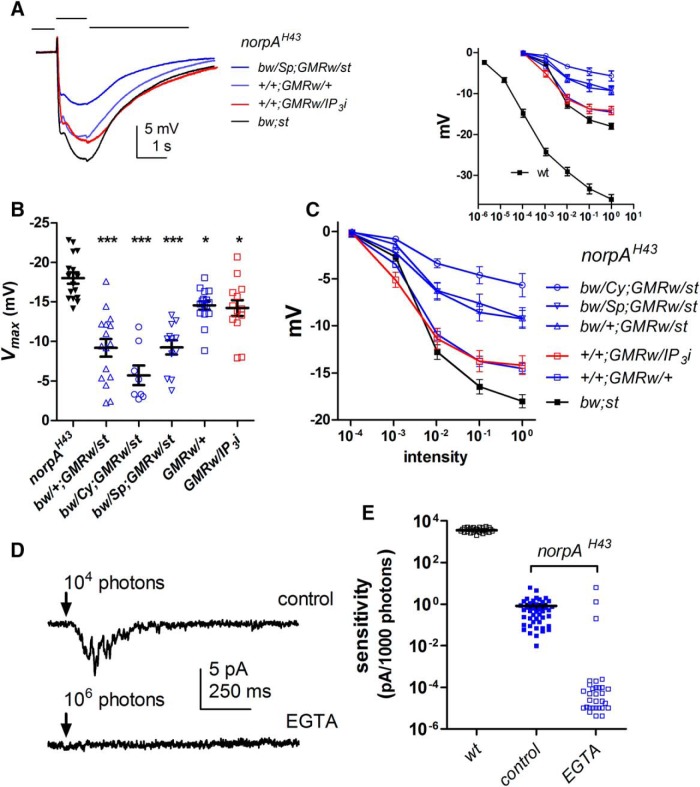Figure 9.
GMRGal4, but not IP3R-RNAi, suppresses sensitivity in norpAH43. A, Representative ERG responses to 1-s flashes of submaximal intensity (10−1 on C) in norpAH43 mutant backgrounds. norpAH43 flies carrying one copy of GMRw (generated by three independent crosses) had consistently smaller responses than norpAH43; bw;st control (without GMR). Flies also expressing UAS-IP3R-RNAi (red) had among the largest responses and were indistinguishable from their closest control (norpAH43;+/+;GMRrw/+). B, C, V/log I curve and Vmax values from all genotypes (mean ± SEM, n = 12–16 flies). Vmax in all backgrounds with one copy of GMRGal4 were significantly (*, p < 0.05; ***, p < 0.001) suppressed compared with wild-type (one-way ANOVA, Dunnett’s multiple comparison test). D, Whole-cell recordings from norpAH43 photoreceptors. Top, response to 10-ms flash containing ∼104 wild-type effective photons recorded with control electrode solutions. Bottom, a ∼100× brighter flash (106 photons) elicited no response in a cell recorded with 1 mm EGTA. E, Sensitivity (tested ∼2 min after establishing the whole-cell configuration) expressed in pA/1000 wild-type effective photons in norpAH43 recorded with control electrode solution was approximately four orders of magnitude less than in wild-type (note log10 plot). With EGTA, there was no detectable response in 28 of 31 cells to flashes containing 106 photons (the variation in amplitudes of these data points reflects noise in the baseline).

